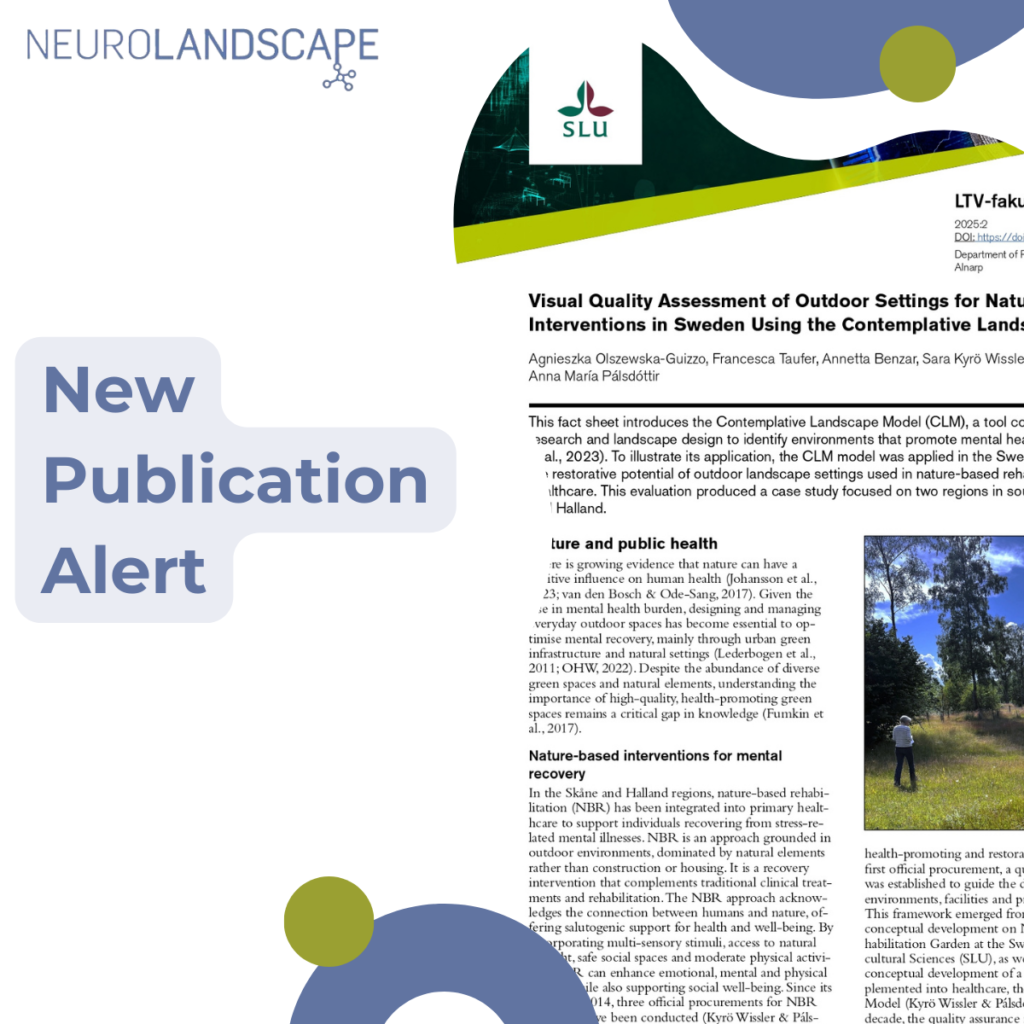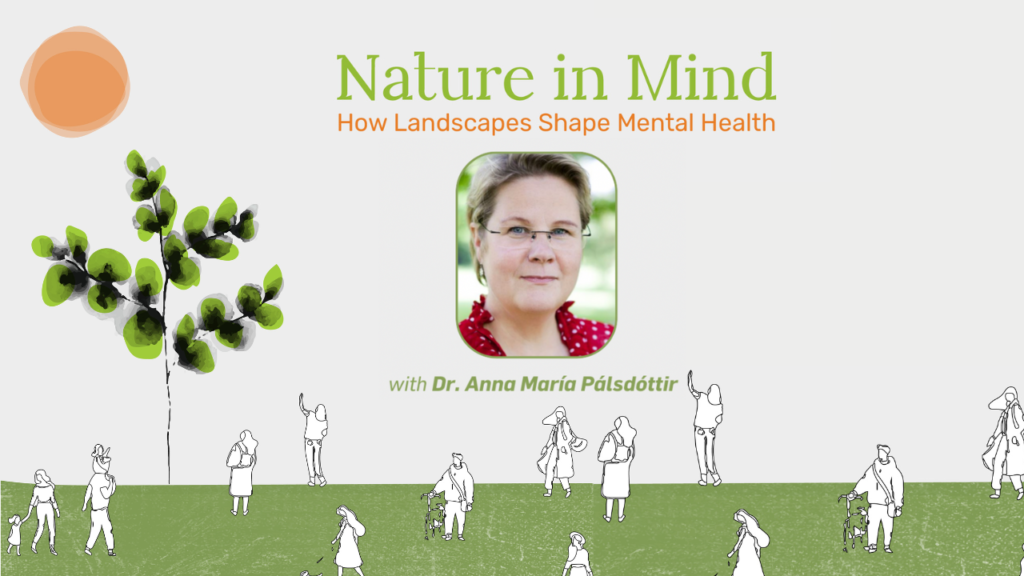Research Gate link
Tag: sweden
Nature in Mind: An Interview with Dr. Anna María Pálsdóttir
Dr. Anna María Pálsdóttir is the Senior Lecturer/Assistant Professor in Environmental Psychology at the Swedish University of Agricultural Sciences (SLU), the Department of People and Society. She is a professional horticulturist with a BSc in Biology & Horticulture Sciences and a MSc and PhD in Landscape Planning and Environmental Psychology. Dr. Pálsdóttir works with conceptual Read More
Therapeutic Landscapes, Hospice Care, and Fight Club: An Interview with Landscape Architect Anna Artemeva
“The important thing to understand is that a hospice is not a place where people die, but rather a place where they live out their final stage of life.” Anna Artemeva, Landscape Architect



